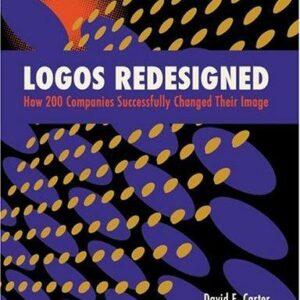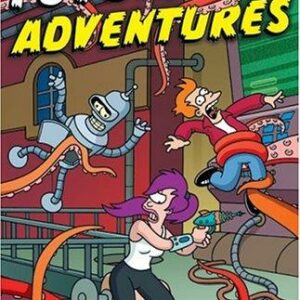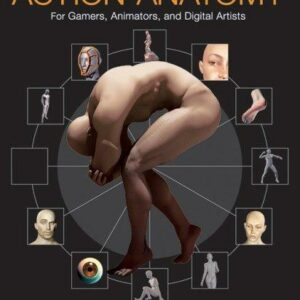Trade-Off
$18.00
| Title | Range | Discount |
|---|---|---|
| Trade Discount | 5 + | 25% |
- Description
- Additional information
Description
A Fresh and Important New Way to Understand Why We Buy
Why did the RAZR ultimately ruin Motorola? Why does Wal-Mart dominate rural and suburban areas but falter in large cities? Why did Starbucks stumble just when it seemed unstoppable?
The answer lies in the ever-present tension between fidelity (the quality of a consumer’s experience) and convenience (the ease of getting and paying for a product). In Trade-Off, Kevin Maney shows how these conflicting forces determine the success, or failure, of new products and services in the marketplace. He shows that almost every decision we make as consumers involves a trade-off between fidelity and convenience–between the products we love and the products we need. Rock stars sell out concerts because the experience is high in fidelity-–it can’t be replicated in any other way, and because of that, we are willing to suffer inconvenience for the experience. In contrast, a downloaded MP3 of a song is low in fidelity, but consumers buy music online because it’s superconvenient. Products that are at one extreme or the other–those that are high in fidelity or high in convenience–-tend to be successful. The things that fall into the middle-–products or services that have moderate fidelity and convenience-–fail to win an enthusiastic audience. Using examples from Amazon and Disney to People Express and the invention of the ATM, Maney demonstrates that the most successful companies skew their offerings to either one extreme or the other-–fidelity or convenience-–in shaping products and building brands.“A rare book that leaves you with a simple but profound way to build stronger products, organizations, and careers. Trade-Off introduces one of those ideas that will stick in your mind for decades. Get ready to re-think what differentiates success from failure.”
–Tom Rath, co-author of the New York Times bestseller Strengths Based Leadership
“What’s new out there, what’s good, and will it be around tomorrow? Kevin Maney has written a provocative and original exploration of some of the mysteries of our consuming lives: why, for instance, has Apple stayed hot and Motorola gone cold? Will Starbucks and Wal-Mart and American Airlines flourish or flop? Required reading for all CEOs; intriguing and entertaining for the rest of us.”
–Harold Evans, author of They Made America: Two Centuries of Innovators
“This book demystifies success in the marketplace. Buy it, read it, learn from it and use it.”
–Keith Ferrazzi, bestselling author of Never Eat Alone and Who’s Got Your Back
“Moving deftly from Crocs to the Kindle, to Ozzy Osborne, to the daily newspaper, Kevin Maney shows how the trade-off between fidelity and convenience can make or break a business. He shares several success stories, of course. But even better, he tells us about some serious commercial bloopers. These cautionary tales alone are worth the price of this terrific book.”
— Daniel H. Pink, author of A Whole New Mind
“Trade-Off by Kevin Maney shows how the tug-of-war between quality and convenience can make or break a product, a brand, or even a company. This book puts a new slant on why we make the choices we make in the marketplace. A fresh and fascinating read!”
–Ken Blanchard, co-author of The One Minute Manager and Leading at a Higher Level
“Packed with historical and contemporary case studies, Trade-Off is a practical guide to overcoming business dilemmas and steering your company toward long-term success. Kevin Maney offers straight talk about choosing winning strategies that will keep your brand strong.”
–Tom Kelley, bestselling author of The Art of Innovation and The Ten Faces of Innovation
“Unputdownable! Trade-Off will change the way you think about why some things–iphones or Coach bags–take off, while others fall by the wayside. It you want to understand why the marketplace works the way it does, read it–then read it again.”
–Linda Kaplan Thaler, bestselling author of The Power of Nice and The Power of Small
“…like Malcolm Gladwell in his best-selling books Outliers and Blink, Maney presents a seemingly simple premise and the evidence to support it — as well as various factors that can complicate it.”
—Reuters
“Worth a read for another take on shifting ideas of quality.”
—WiredKEVIN MANEY, the author of Megamedia Shakeout and The Maverick and His Machine, has been a contributing editor to Condé Nast Portfolio and a contributor to The Atlantic, Wired, NPR, and ABC News NOW. He covered the technology industry for USA Today for almost two decades. He lives outside of Washington, D.C.
Visit the author at his website, www.kevinmaney.com.Chapter One
The Fidelity Swap
We constantly, in our everyday lives, make trade-offs between the fidelity of an experience and its convenience. It happens when we decide to watch a baseball game on TV instead of going to the park, make a phone call instead of meeting face-to-face, eat fast food at McDonald’s instead of a nice meal at a restaurant, or buy $300 noise-canceling Bose headsets instead of using the inexpensive earbuds that come with the music player. Businesses, nonprofits, and governments make the same kinds of trade-offs in their buying decisions.
The way those trade-offs work and play out in the marketplace is the key to countless business successes and failures. This is the fidelity swap.
This fidelity swap has been going on since humans invented commerce. But the role of technology today accelerates the whole process.
There are five key concepts behind the fidelity swap:
Fidelity versus convenience. Fidelity is the total experience of something. At a rock concert, for instance, it’s not just the quality of the sound—which often isn’t as good as listening to a CD on a home stereo—but also everything else going on. That includes visually seeing the band, the lights and effects, the crowd around you, even the fact that you can later tell people you went to a particular concert and saw The Who, or Coldplay, live. It’s all part of what makes up fidelity.
Convenience is how easy or hard it is to get what you want. That includes whether it’s readily available, whether it’s easy to do or use, and how much it costs. If something is less expensive, it’s naturally more convenient because it’s easier for more people to get it. In music, a downloaded song from iTunes is tremendously convenient—available anytime, easy to use, and inexpensive. It is, however, relatively low fidelity—a downloaded song file typically has ten times less audio information than the same song on a CD.
Consumers constantly trade fidelity for convenience, and vice versa. Once in a while you may go to an astoundingly inconvenient U2 concert simply because the fidelity of the experience cannot be replicated. Most of the time, however, we’ll choose the low-fidelity, high-convenience experience: listening to U2 on a digital music player stuffed in a pocket.
But our fidelity-versus-convenience decisions are not static. They change with circumstance, sometimes moment to moment. And people with different priorities—those who have more, or less, discretionary income, those with more or less time on their hands, different age groups—make different trade-offs.
The tech effect. Technology constantly improves both fidelity and convenience. If a product or service is the highest fidelity today, technology and innovation will soon make it possible to create a product or service of higher fidelity. The same is true of convenience. These boundaries move over time. Nothing about the fidelity swap stays fixed.
The fidelity belly. Any product or service that is neither extremely high-fidelity nor high-convenience risks sinking into what I call the fidelity belly—the no-man’s-land of consumer experience. It is a land ruled by apathy. No one gets very excited about a product or service that has so-so fidelity, and is only somewhat convenient. This is the problem movie theaters are falling into. It is the same problem hurting music CD sales. Because the tech effect keeps expanding the outer edges of fidelity and convenience, it expands or redefines the borders of the fidelity belly at the same time. The expanding belly swallows products and services that don’t improve and keep pace with technology advancements.
The fidelity mirage. Contrary to what many businesses want to believe, achieving both high fidelity and high convenience seems to be impossible. It looks tempting. Some companies believe they can get there, and life will be beautiful. But as it turns out, any company or product that attempts to capture both is likely to fail, wasting resources and time. Starbucks and the luxury goods maker Coach are companies that have attempted this, only to crash to earth.
Super-fidelity or super-convenience. This defines the winners. Most successful products fall either at the far end of the fidelity axis or at the far end of the convenience axis. Apple landed the iPhone at the top of the fidelity axis in the cell-phone market, and it was an instant success despite its high price tag and limited availability. Wal-Mart won its leading-retailer position by becoming the high-convenience winner, making shopping for basics easier and cheaper than anywhere else. The fidelity of Wal-Mart is poor, just as the pricey iPhone started off as inconvenient. But that didn’t matter. A way to win is to get to the top of one axis or the other.
Here are two significant additional factors to watch for:
Social accelerants. Our connection with others and our individual identity matter more to us than just about anything else. All other quality/convenience factors being equal, adding a social dimension can change the prospect of a product or service. That’s why teens will buy a cell-phone ring tone for three dollars, but balk at paying ninety-nine cents for a full song on iTunes. A song on your iPod is just for its owner to enjoy—it has little social value. A ring tone announces your taste in music to the world, giving it great social value. This kind of social dimension can increase the fidelity of anything.
Wrecking-ball moments. Every once in a while a new product or service smashes a market sector and starts an entirely new one, resetting the trade-offs people will make between fidelity and convenience. For example, when digital cameras arrived on the scene, they competed in the overall camera market, which included both film and digital versions. By the 2000s, digital cameras had blown apart the film-camera market, creating an entirely new sector dominated by digital cameras on both the high end (or high fidelity) and low end (or high convenience). Film cameras became entombed inside the fidelity belly, offering few advantages in fidelity or convenience for most consumers.
The fidelity/convenience trade-off gives us a new kind of lens for understanding business and, for that matter, other aspects of life. One way to envision how the trade-off works is to put it on a chart.
A product or service that’s positioned high up along the fidelity axis might not offer much convenience, but that’s okay—customers will make that trade-off of high convenience and low fidelity. Similarly, a product or service far out on the convenience axis doesn’t need much fidelity. And, in fact, the most successful products or services tend to be high convenience/low fidelity—or high fidelity/low convenience.
Products or services that are so-so fidelity and so-so convenience wind up in the fidelity belly, a zone of muddy brand vision and consumer apathy.
In the upper-right is the fidelity mirage. I’ll explain later why trying to reach the mirage is a fool’s errand. Like an invisible tractor beam in a Star Trek movie, the dynamics of the fidelity/convenience trade-off drag any entity that drives toward the mirage down toward the fidelity belly.
The arrows at the end of each axis depict the tech effect. Technology constantly moves the outer edges of fidelity and convenience. Products or services that don’t adapt get left behind, eventually winding up in the fidelity belly.
///
How can the fidelity-swap model shed new light on a particular product or business? Let’s look at the ways to buy a book.
At the top end of fidelity in terms of the book-buying experience are the well-run, well-known, quirky independent bookstores that people will go out of their way to visit, like the Tattered Cover in Denver, Kramerbooks in Washington, D.C., or The Book Stall in Winnetka, Illinois. They’re not just bookstores—they are destination locations that have social value. Telling others that you bought a book at the Tattered Cover conveys a bit of status upon you and your tastes. Despite pressure from big bookstore chains, these independent bookstores thrive because of their fidelity advantage.
Over on the convenience axis, at the far end, sits Amazon.com. There is no easier way to learn about and buy a book, and get it into your hands. You don’t have to drive anywhere. Features such as Amazon’s reader reviews, one-click ordering, high discounts, and free shipping make Amazon today’s best bookselling website. It thrives because it is the convenience winner.
So where do other book-selling stores land on the quality/convenience scale? Wal-Mart lands on the convenience side, although it is less convenient than Amazon, because you have to drive there. A Barnes & Noble or Borders superstore, on the other hand, lands on the fidelity side—not on a par, perhaps, with a Tattered Cover, because a Barnes & Noble is a chain and doesn’t convey as much of a special experience. Still it offers a good book-buying experience.US
Additional information
| Weight | 7 oz |
|---|---|
| Dimensions | 0.5100 × 5.2000 × 7.9700 in |
| Imprint | |
| Format | |
| ISBN-13 | |
| ISBN-10 | |
| Author | |
| Audience | |
| BISAC | |
| Subjects | behavioral economics, personal development, branding, strategy, data, money, business strategy, productivity, influence, economics books, entrepreneurship, startup, business books, BUS063000, adaptive markets, traction, marketing books, advertising books, predictive analytics, digital marketing, data analytics, consumer behavior, technology, management, advertising, psychology, business, self help, organization, work, health, BUS043000, leadership, marketing, creativity, career, Sociology, economics, how to, economy, psychology books, design, reference |











